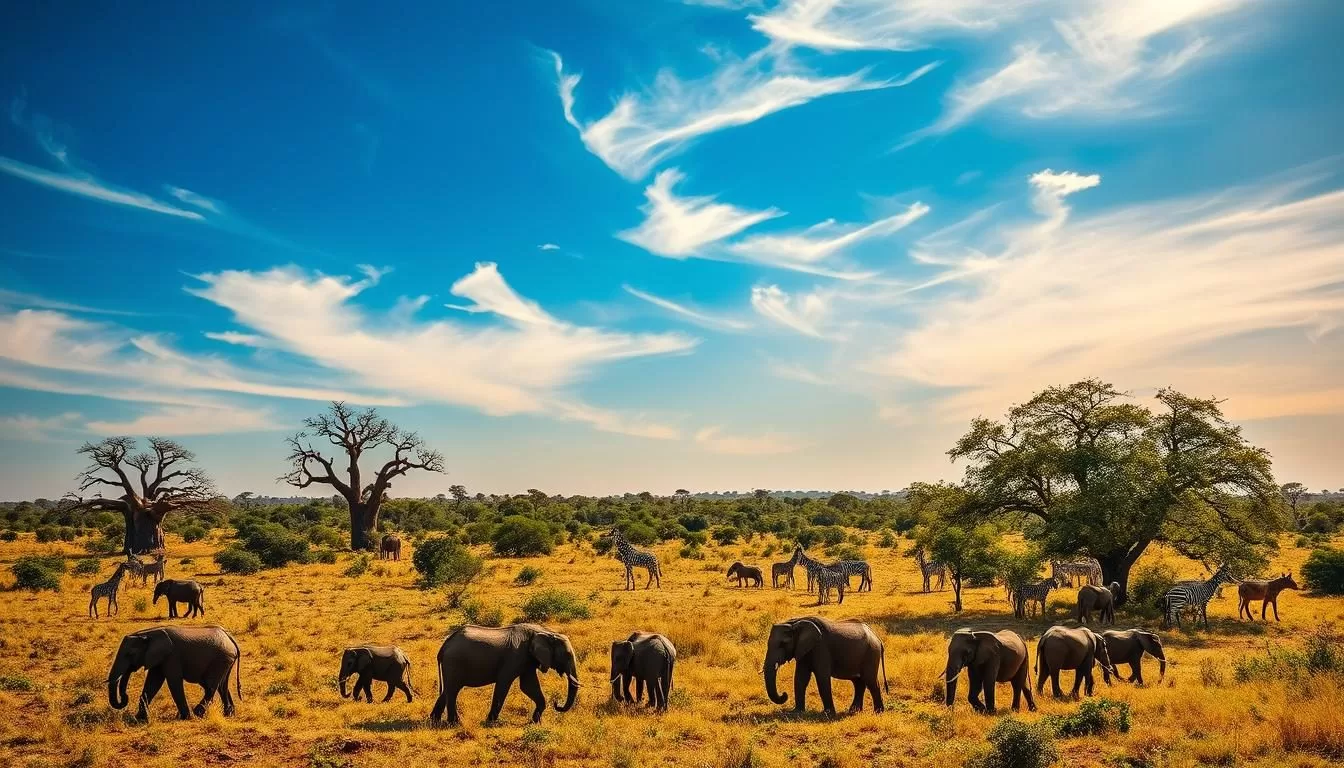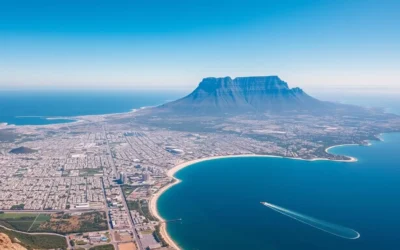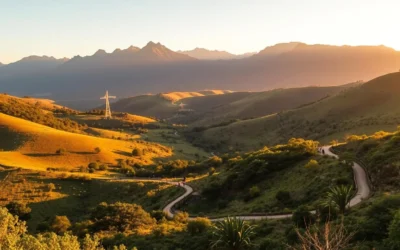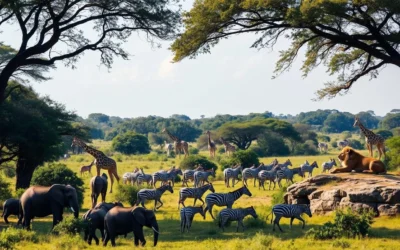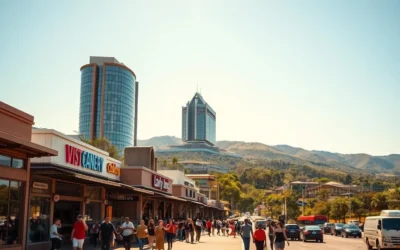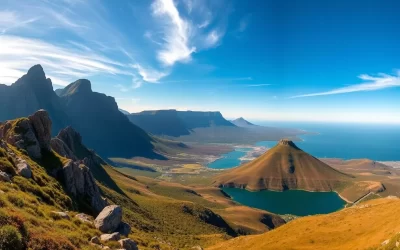Imagine embarking on a safari adventure in one of Africa’s most renowned wildlife destinations. Located in the north-east of South Africa, Kruger National Park is a must-visit for any traveler. Spanning nearly 220 miles from north to south and about 40 miles wide, this vast landscape is home to over 200,000 mammals, hundreds of bird species, and the iconic Big Five.
As you explore this incredible national park, you’ll discover diverse ecosystems and habitats, offering experiences for every type of traveler. Whether you’re a first-time safari-goer or a seasoned wildlife enthusiast, Kruger has something to offer. From budget-friendly self-drive options to luxury private lodge experiences, you’ll be spoiled for choice.
With its unique blend of wildlife and natural beauty, Kruger National Park is an unforgettable experience. Get ready to immerse yourself in the true African wilderness and create lifelong memories.
Discovering Kruger National Park: Africa’s Premier Safari Destination
With its unparalleled biodiversity and expansive landscapes, Kruger National Park stands out as a premier safari destination. As one of Africa’s largest game reserves, Kruger offers an unforgettable journey into the wild, home to an astonishing variety of wildlife and animals.

The Size and Significance of Kruger
Kruger National Park is a vast conservation area, covering approximately 7,523 square miles (19,485 square kilometers). To put that into perspective, it’s roughly the size of Israel or New Jersey. This immense size is a key factor in its ecological significance, as it protects a wide range of habitats that support over 140 mammal species, 517 bird species, and numerous other forms of wildlife.
| Ecosystem Feature | Description | Significance |
|---|---|---|
| Mammal Species | 140 species, including the Big Five | High biodiversity |
| Bird Species | 517 species recorded | Rich avifauna |
| Area Covered | 7,523 square miles (19,485 km²) | Large conservation area |
What Makes Kruger Special
What sets Kruger apart from other safari destinations is its accessibility and well-developed infrastructure. Unlike many African game reserves, Kruger allows visitors to self-drive through the park on well-maintained roads, making safari experiences accessible to travelers of various budgets. The park’s diverse landscapes, ranging from dense mopane woodlands to open savannas, create distinct ecosystems that support a wide variety of wildlife, offering varied experiences for visitors.
The combination of Kruger’s vast size, rich biodiversity, and accessible infrastructure makes it a unique and compelling destination for anyone interested in exploring the natural beauty and wildlife of Africa.
When to Visit Kruger National Park
Kruger National Park, one of Africa’s premier safari destinations, is a year-round attraction, but the best time to visit depends on your preferences. The park offers unique experiences throughout the year, with different seasons providing various opportunities for wildlife viewing and exploration.
Dry Season: May to September
The dry season, which spans from May to September, is considered an ideal time to visit Kruger National Park. During these months, the vegetation is less dense, making it easier to spot animals. The dry conditions also lead to a concentration of wildlife around water sources, enhancing your chances of witnessing a variety of species.
The dry season offers warm days and chilly nights, so it’s essential to pack layers for your visit. This period is considered the ‘high season,’ and prices at hotels and lodges are typically higher.
Wet Season: October to April
In contrast, the wet season, which runs from October to April, transforms Kruger National Park into a lush green paradise. The full waterholes and flowing rivers attract a wide range of wildlife, and the abundance of newborn animals and migratory birds makes this a great time for nature enthusiasts.
However, the dense vegetation during this period can make wildlife viewing more challenging. Additionally, afternoon thunderstorms and high temperatures can impact your safari experience.
Best Month for Wildlife Viewing
If you’re looking for the best month to visit Kruger National Park for wildlife viewing, June stands out as an excellent choice. The dry winter conditions create ideal conditions for spotting animals, and the temperatures are generally comfortable.
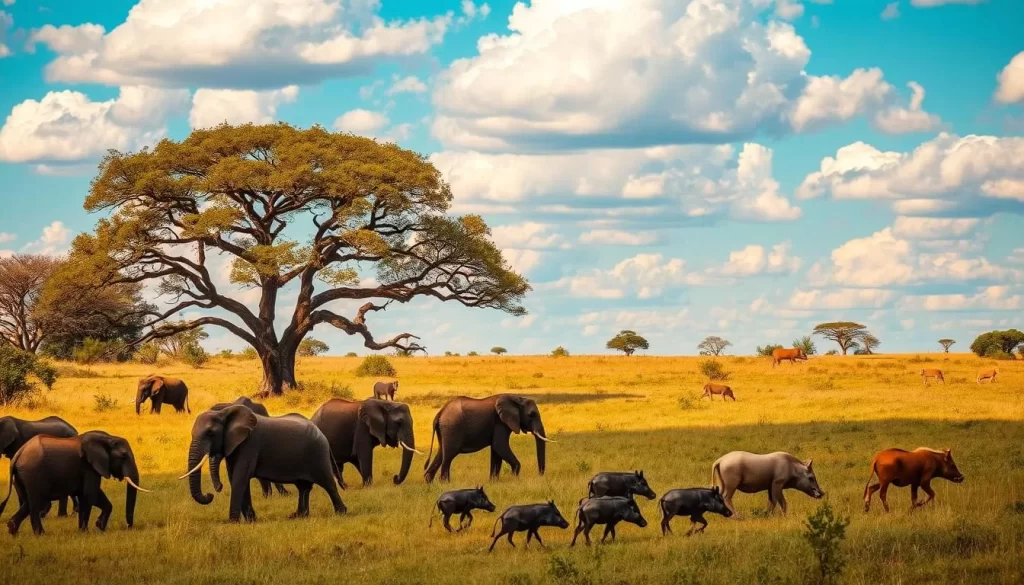
Alternatively, if you’re interested in witnessing the dramatic rutting season, consider visiting between March and May. This period offers a unique opportunity to see male antelope engaging in territorial displays and battles for dominance.
Planning Your Kruger National Park Safari
To make the most of your Kruger National Park adventure, careful planning is essential. This involves deciding on the duration of your stay, how to get to the park, and understanding the entry fees and gate times.
How Many Days to Spend
The ideal duration for a safari in Kruger National Park depends on your interests and the time you have available. For most international visitors, 3-4 days is considered the sweet spot – enough time to experience different areas of the park and increase your chances of seeing diverse wildlife without exhaustion.
Getting to Kruger National Park
You have several options for reaching Kruger National Park: flying into one of three airports (Nelspruit/KMIA, Hoedspruit, or Skukuza) is the fastest but most expensive option, while driving from Johannesburg (5-6 hours) offers flexibility at a lower cost.
| Airport | Distance to Kruger | Travel Time |
|---|---|---|
| Nelspruit/KMIA | Approx. 100 km | 1.5 hours |
| Hoedspruit | Approx. 30 km | 0.5 hours |
| Skukuza | Within Kruger | N/A |
Entry Fees and Gate Times
Entry fees for international visitors are R535 (approximately $29 USD) per adult per day and R267 ($14 USD) per child per day. It’s also crucial to plan your itinerary around the park’s strict gate opening and closing times – gates open at sunrise (between 5:30-6:00 AM depending on season) and close at sunset (between 5:30-6:30 PM), with hefty fines for late returns.
By considering these factors, you can plan a safari that fits your schedule and budget, ensuring a memorable trip to South Africa’s renowned Kruger National Park.
Kruger National Park, South Africa: Best Things to Do – Top Picks
As one of Africa’s premier safari destinations, Kruger National Park is packed with unforgettable experiences. Whether you’re a seasoned traveler or just starting to plan your adventure, Kruger offers a wide range of activities to suit every interest.

Game Drives – Guided vs Self-Drive
Game drives are the quintessential Kruger experience, offering two distinct options: guided drives with professional rangers or self-drive adventures. Guided game drives provide significant advantages, including expert knowledge and the ability to go off-road to get closer to animals. On the other hand, self-driving gives you complete control over your safari experience, allowing you to stop as long as you want at sightings and explore at your own pace.
Guided game drives are particularly beneficial for first-time visitors or those unfamiliar with the park’s layout and wildlife. Rangers communicate with each other about wildlife sightings, ensuring that you don’t miss out on any significant encounters.
Walking Safaris
Walking safaris offer an entirely different perspective of the park, accompanied by armed rangers. These 3-4 hour bush walks connect you intimately with the ecosystem as you learn to track animals, identify plants, and experience the thrill of being on foot in big game country. It’s an exhilarating way to explore Kruger’s wilderness and gain a deeper understanding of the natural world.
Night Drives
Night drives reveal Kruger’s nocturnal side, where you might spot elusive creatures like leopards, bush babies, genets, and prowling predators hunting under cover of darkness. These excursions must be booked through SANParks and cannot be done independently, ensuring a safe and guided experience.
Night drives are a unique opportunity to witness the park’s nocturnal wildlife, offering a fresh perspective on the familiar landscapes of Kruger. With the guidance of experienced rangers, you’ll have the chance to see animals that are rarely seen during the day.
In addition to game drives, walking safaris, and night drives, Kruger National Park also offers specialized photographic safaris and bird watching excursions. Photography enthusiasts can benefit from vehicles designed for optimal camera positioning and guides knowledgeable about the best lighting and positioning for wildlife photography. Bird watching excursions are particularly rewarding in Kruger, with over 500 species to be spotted, including specialties like the Southern Ground Hornbill and the Lilac-breasted Roller.
Wildlife Viewing in Kruger
With over 140 mammal species, Kruger is a premier destination for observing Africa’s iconic wildlife. The park’s diverse ecosystems support a wide range of animals, from the Big Five to various antelope species.
The Big Five and Where to Find Them
Kruger National Park offers some of Africa’s most reliable Big Five viewing opportunities. You can spot lions in the central and southern regions around Satara and Lower Sabie rest camps. Leopards, though elusive, are frequently seen along the Sabie River near Skukuza. Elephants are abundant throughout Kruger, particularly around Letaba and Olifants camps. Buffalo herds can be found near permanent water sources, such as along the H10 road between Lower Sabie and Tshokwane. Rhinos, both white and black, are most commonly seen in the southern section between Skukuza and Crocodile Bridge.
| The Big Five | Common Locations |
|---|---|
| Lion | Satara, Lower Sabie |
| Leopard | Sabie River, Skukuza |
| Elephant | Letaba, Olifants |
| Buffalo | H10 road, Lower Sabie to Tshokwane |
| Rhino | Skukuza, Crocodile Bridge |
Bird Watching Opportunities
Kruger is a birdwatcher’s paradise with over 500 species recorded. The Pafuri region in the far north offers the best birding opportunities, especially during summer months when migratory species arrive. Water-based viewing points like Sunset Dam near Lower Sabie and Lake Panic Bird Hide near Skukuza are ideal for observing water birds and other wildlife.
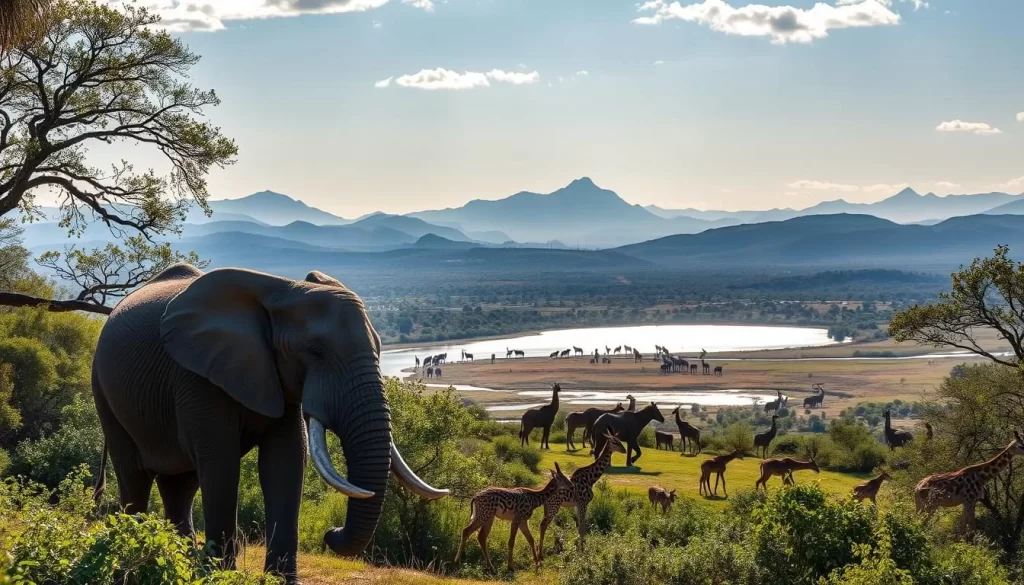
Best Wildlife Viewing Spots
The park’s diverse landscapes provide numerous excellent wildlife viewing spots. Areas around water sources, such as dams and rivers, are particularly good for spotting a variety of animals. The H10 road between Lower Sabie and Tshokwane is known for buffalo sightings, while the Sabie River is a hotspot for leopard sightings.
Exploring Different Regions of Kruger
As you venture into Kruger National Park, you’ll discover that it’s not just a single destination, but a collection of diverse regions, each with its unique charm and wildlife experiences. The park is broadly divided into three main regions: Southern Kruger, Central Kruger, and Northern Kruger, each offering distinct landscapes and wildlife viewing opportunities.

Southern Kruger: Busy but Rewarding
The southern region of Kruger National Park, south of the Sabie River, is the most accessible and developed area, featuring excellent infrastructure and the highest concentration of rest camps. This region is particularly known for its high chances of spotting the Big Five, especially rhinos and leopards. The Skukuza Rest Camp, the park’s largest and most developed facility, is located here, making it a great base for your safari adventure. The game-rich area around Lower Sabie and the diverse landscapes along the Crocodile River are key highlights.
Central Kruger: The Heart of the Park
Central Kruger, situated between the Sabie and Olifants Rivers, offers an ideal balance of excellent wildlife viewing with fewer crowds. The open savanna plains here support large predator populations, particularly around Satara Rest Camp. The region is renowned for its lion sightings along the S100 and H1-4 roads, while the dramatic viewpoints at Olifants Rest Camp provide spectacular vistas over the Olifants River valley and excellent elephant viewing.
Northern Kruger: Remote and Tranquil
The northern region of Kruger, north of the Olifants River, transforms into a more remote wilderness with distinctive mopane woodlands, fever tree forests, and baobab trees, offering a completely different ecosystem and wildlife experience. While game viewing can be more challenging due to denser vegetation, the region compensates with exceptional birding, particularly around Pafuri, and a more authentic wilderness experience. The tranquil riverside setting of Shingwedzi in the north allows visitors to experience a different aspect of Kruger’s diverse environments.
Each region within Kruger National Park features distinctive rest camps with unique characters, allowing you to experience the diverse environments and wildlife that the park has to offer. Whether you’re looking for the bustling activity of the south or the serene wilderness of the north, Kruger has something for every kind of visitor.
Must-Visit Locations in Kruger National Park
When visiting Kruger National Park, there are several key locations you shouldn’t miss. The park is filled with incredible sites, each offering a unique experience that showcases its diverse wildlife and landscapes.
Luvuvhu River Drive (S63)
The Luvuvhu River Drive, marked as S63, is one of the most scenic routes in Kruger National Park. This 20km gravel road winds through a lush riverine forest, providing an ideal habitat for leopards and numerous bird species. As you drive from the Pafuri picnic spot to Crook’s Corner, you’ll traverse an area that, despite representing just 1% of the park’s size, contains 75% of its biodiversity. The road is pleasantly shaded by trees that leopards love to climb with their kill for a quiet meal. You’re allowed to exit your car at both the Pafuri picnic spot and Crook’s Corner, making these stops even more special.
Tshanga Viewpoint
Tshanga Viewpoint is a hidden gem in the northern section of Kruger, near Bateleur Bush Camp. It offers one of the park’s most spectacular panoramas, with a rare opportunity to exit your vehicle and climb a short trail to a rocky outcrop. From this elevated spot, you’ll enjoy 360-degree views of the surrounding savanna, making it an ideal location for spotting wildlife. The viewpoint remains relatively unknown to most visitors, providing a peaceful experience away from the crowds.
Lower Sabie Area
The Lower Sabie Rest Camp and its surrounding area are consistently ranked as one of Kruger’s premier wildlife viewing regions. Situated at the confluence of the Sabie River and several major roads that serve as wildlife corridors, this area is teeming with life. The H4-1 road between Skukuza and Lower Sabie follows the Sabie River and is often called “the golden mile” due to its exceptional game viewing, particularly for leopards in the dense riverine vegetation. Sunset Dam, just outside Lower Sabie Rest Camp, offers spectacular wildlife viewing from your vehicle, with hippos, crocodiles, elephants, and numerous water birds frequently seen, especially during late afternoon.
- Luvuvhu River Drive: A scenic 20km gravel road ideal for spotting leopards and bird species.
- Tshanga Viewpoint: Offers panoramic views and a chance to spot wildlife from an elevated perspective.
- Lower Sabie Area: Known for exceptional game viewing, including leopards, hippos, and elephants.
Accommodation Options in Kruger
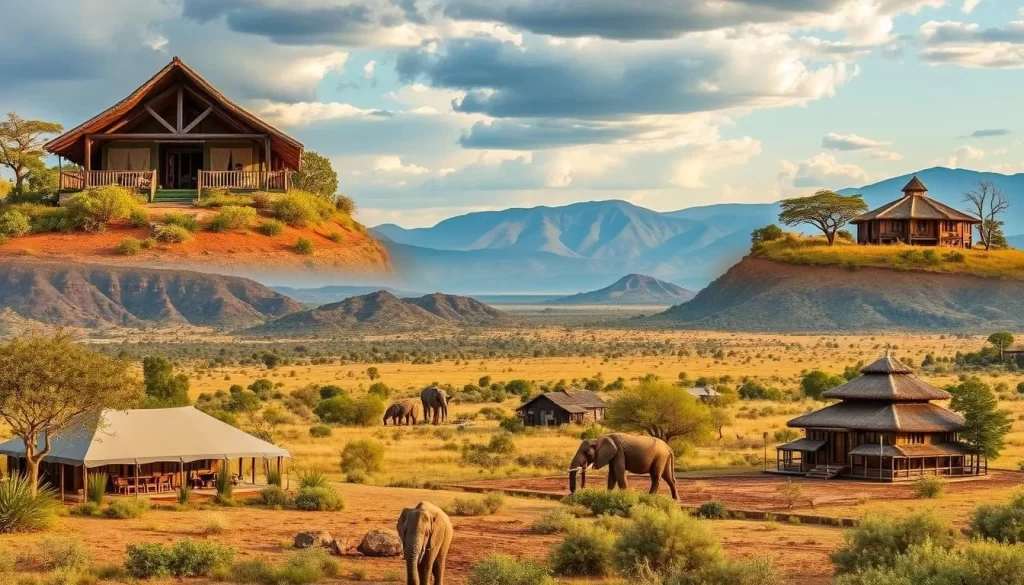
From budget-friendly rest camps to luxury lodges, Kruger National Park has something for every kind of traveler. The park offers three main accommodation categories to suit different budgets and preferences: government-run rest camps inside the park, private luxury lodges within or adjacent to the park, and more affordable lodges outside the park gates.
Rest Camps: Affordable and Authentic
Rest camps provide the most authentic and economical Kruger experience. With 12 main camps and several smaller bushveld camps, you can choose from a variety of accommodation types, ranging from camping sites ($20/night) to family cottages ($160/night). These camps are protected by electric fences and offer basic amenities like shops, restaurants, and swimming pools.
Popular rest camps include Skukuza, the largest with the best facilities, Lower Sabie, renowned for excellent game viewing, Satara, famous for lion sightings, and Olifants, with spectacular river views. Booking well in advance is essential, especially during South African school holidays.
Private Luxury Lodges
For a more luxurious experience, private luxury lodges within Kruger or in adjacent private reserves offer all-inclusive experiences. Properties like Lion Sands Tinga Lodge ($2,400/night), Singita Lebombo Lodge, and Royal Malewane provide gourmet dining, private plunge pools, spa facilities, and exclusive game drives with expert guides.
These high-end lodges are typically located in private concessions within Kruger or in adjacent private reserves like Sabi Sands, Timbavati, or Klaserie, where off-road driving and night drives are permitted for closer wildlife encounters.
Lodges Outside the Park
For travelers seeking a balance between comfort and value, numerous lodges outside the park gates offer comfortable accommodation at moderate prices ($100-250/night). Properties like Needles Lodge in Marloth Park, Buckler’s Africa Lodge near Crocodile Bridge, or Protea Hotel Kruger Gate are good options.
When choosing your accommodation, consider not just the price but also the location. Staying inside the park gives you a head start on morning game drives and allows you to remain in the park until closing time, while outside lodges often require daily entry fees and travel time to and from gates.
What to Pack for Your Kruger Safari
Preparing for your Kruger National Park safari requires thoughtful packing to ensure a comfortable and enjoyable experience. The right clothing and equipment can make a significant difference in your adventure.
Safari Clothing Essentials
When it comes to dressing for a safari, neutral colors are key. Pack clothing in shades of khaki, beige, olive, and brown to blend in with the environment. These earth tones are not just aesthetically pleasing; they’re also practical, especially during walking safaris where bright colors are often not allowed. Dressing in layers is also advisable due to Kruger National Park’s significant temperature fluctuations between morning, noon, and night.
For early morning and evening game drives, long-sleeved shirts and long pants are recommended to protect against the elements and insects. Even in the summer, the mornings and evenings can be cool, especially during the winter months (May to September).
Photography and Viewing Equipment
For capturing the beauty of Kruger National Park, a good camera with a zoom lens (at least 300mm) is highly recommended. While smartphone cameras have improved, they often struggle with distant subjects. Bringing binoculars can also enhance your wildlife viewing experience, especially for bird watching.
Health and Safety Items
Don’t forget to pack essential health and safety items. These include high-SPF sunscreen, insect repellent with DEET, a wide-brimmed hat, polarized sunglasses, hand sanitizer, and any personal medications. For open vehicle game drives, consider bringing a bandana or buff to protect your face from dust, a small daypack for essentials, and a reusable water bottle.
Additional practical accessories include a headlamp for navigating camp at night, a power bank for charging devices, and zip-lock bags to protect electronics from dust and rain.
Health and Safety in Kruger National Park
A safe and enjoyable experience in Kruger National Park begins with understanding the health and safety guidelines. When on a safari, it’s crucial to be aware of the potential risks and take necessary precautions to mitigate them.
Malaria Prevention
Malaria is a significant risk in Kruger National Park, particularly during the wet summer months from October to May. To protect yourself, consider taking antimalarial medication before, during, and after your trip. Consult your doctor or a travel clinic 4-6 weeks prior to discuss the most appropriate prophylaxis options, such as Atovaquone/Proguanil (Malarone), Doxycycline, or Mefloquine.
- Practice comprehensive mosquito bite prevention by wearing long sleeves and pants after dusk.
- Use DEET-based repellents on exposed skin.
- Sleep under mosquito nets provided at most accommodations.
- Keep doors and windows closed in the evenings to prevent mosquito entry.
Wildlife Safety Tips
Respecting wildlife and maintaining a safe distance is paramount. Never attempt to approach, touch, or feed wild animals, and always keep your vehicle in designated areas during game drives.
| Safety Tip | Description |
|---|---|
| Maintain a Safe Distance | Keep a safe distance from all wildlife, especially elephants, buffalo, and predators. |
| Vehicle Safety | Remain inside your vehicle at all times except at designated rest camps, picnic sites, and specific viewpoints. |
| Be Aware of Opportunistic Animals | At rest camps and picnic sites, be cautious of monkeys and baboons that can be opportunistic thieves. |
In case of emergencies, South Africa’s emergency number is 10111, though cell phone coverage is limited within the park. Each rest camp has emergency contacts, and guided safari vehicles maintain radio contact with base camps.
Conclusion: Making the Most of Your Kruger Adventure
To make the most of your Kruger National Park visit, plan carefully. Consider visiting during the dry season (May-September) for optimal wildlife viewing. Balance your itinerary between guided game drives and self-drive exploration. Rise early to catch the morning light and increased animal activity. Book your accommodation in advance to secure your preferred options.
The above is subject to change.
Check back often to TRAVEL.COM for the latest travel tips and deals.
